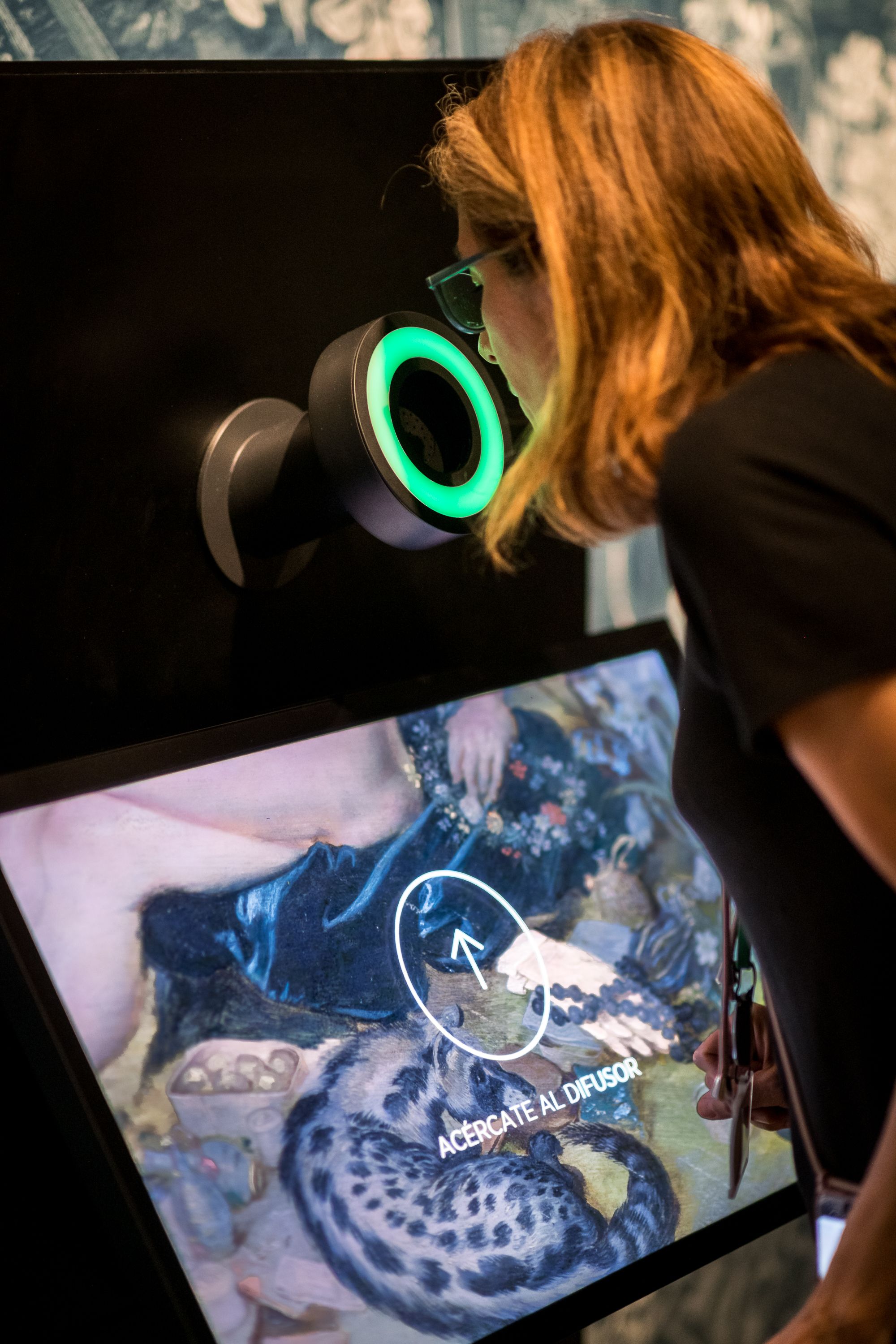A question that perhaps never would do us: To what smells a picture? It seems a question a so much odd, and until of difficult answer. Of difficult answer up to now, because AirParfum has attained it. Definitely, innovation treats of innovation in state in the sector. It offers you the possibility of teleport to the period in which it painted a work of art. An experience, today, even more complete, since it is possible to experience this small trip through our smell. If more no, it is new way to perceive the art, this is what has achieved Puig and AirParfum in the Room 83 in an exhibition of the Museum del Prado of the Building Villanueva, and that came to an end the past month of July with a emphatic success.
With the sense of the sight, could perceive a work of Jan Brueghel the Old and Rubens: The Smell. Said painting has been the protagonist of "The essence of a picture. An olfactory exhibition" in which they have contributed Alejandro Vergara, Boss of Conservation of Flemish Painting and north Schools of the National Museum del Prado, and Gregorio Alone, perfumery senior of Puig and Academician of the Academy of the Perfume. Alone commissioned to create 10 scents that correspond to elements that can observe in the picture, and that give felt to this exhibition and have done that it was an authentic success.
The exhalation of the art
In the exhibition the visitors could smell these 10 scents thanks to the technology offered by "AirParfum". From his knowledge AirParfum has meant a change in the world and in the sector of the perfumery, because as we know, the "AirParfum" has caused a big impact his high innovation and by his effectiveness, but definitely, this synergy that has created beside the culture, has been a big 'boom' for all that did not expect. When we were to visit to Guillem Oña, precursor of AirParfum, could know the most commercial side "" of the machine, and is that in a collaboration beside the App of appointments "Tinder" helped to the customer to identify his "match" with the scent through the tastes of the user: it likes you this scent? It glides to the right, it does not convince you of the everything? It glides to the left. Like this of easy and simple, achieved recognise the preferences of the user, and in some way, enter him to an olfactory culture. But the experience of Museo de El Prado is totally different.
We know a bit more in what consists AirParfum: this technology allows to smell until 100 distinct scents without that our smell fill up, and this helps to respect and to that we can enjoy, identify and value the nuances of each perfume or scent guaranteeing an only experience. Only experience is the one who have lived the visitors of the Museo del Prado, where by means of the 4 diffusers in the 10 tactile monitors that there is to disposal of the user in the room, the assistants have been able to perceive through the smell (and travel with your smell) the 17th century, date of the realisation of the pictorial work of Jan Brueghel the Old and Rubens.
The visitors could smell some of the elements of the exposed work (that it belongs to the collaboration between both artists that represent an allegory of the five senses) like the bouquet of flowers that there is in said painting of Rubens and Jan Brueghel the Old, in which it finds the perfume Allegory of Gregorio Alone and treats of a combination of rose, jasmine and carnation. You imagine you know how smelt the gloves then? It was possible. They could know it through this olfactory experience also. The elites of the Modern Age and the social classes higher perfumed the gloves to avoid the bad smell. In this case, AirParfum expelled an imitation of the smell of a glove perfumed in amber, that imitates a formula of 1696, that contains resins, balsams, wood, essence of flowers and accompanied of a touch of fine leather that simulates the smell of the material of this piece. In the picture of Jan Brueghel and Rubens find the smell of the fig tree, again, a perfume elaborated by Alone, interprets said scent. Also we find in this work, another new olfactory experience, the flower of orange tree, as well as the jasmine. In the case of the smell of jasmine, the visitors can enjoy of a delicate and intense scent. On the other hand, also we can find in the work of Brueghel the smell to rose. Of this flower, Brueghel in his work painted until eight varieties, between them the cientifolia and the damascene, that are the most used in the sector of the perfumery. Besides, we find also the lily, the nard, and finally the civet, that is an animal of African origin of the which in the past extracted the civet, an element used in the past in the world of the perfumery that helped to prolong the length of the perfumes and his smell is strong similar to the excrement.
A 'win-win' for both
The exhibition supposed a decisive success so much for AirParfum as for Puig, in which they worked of conjoint way. So much it went like this, that from the Museum del Prado asked to extension of the exhibition owing to the high demand by part of the assistants and to see the high demand by part of the users. There is not place to doubt that this supposes a field to explode for AirParfum, Puig and a profit for the world of the culture in general, that has seen as renewing and reinventing is able to fill his rooms and do more attractive the knowledge for those that still do not feel this world like a place where fit.
